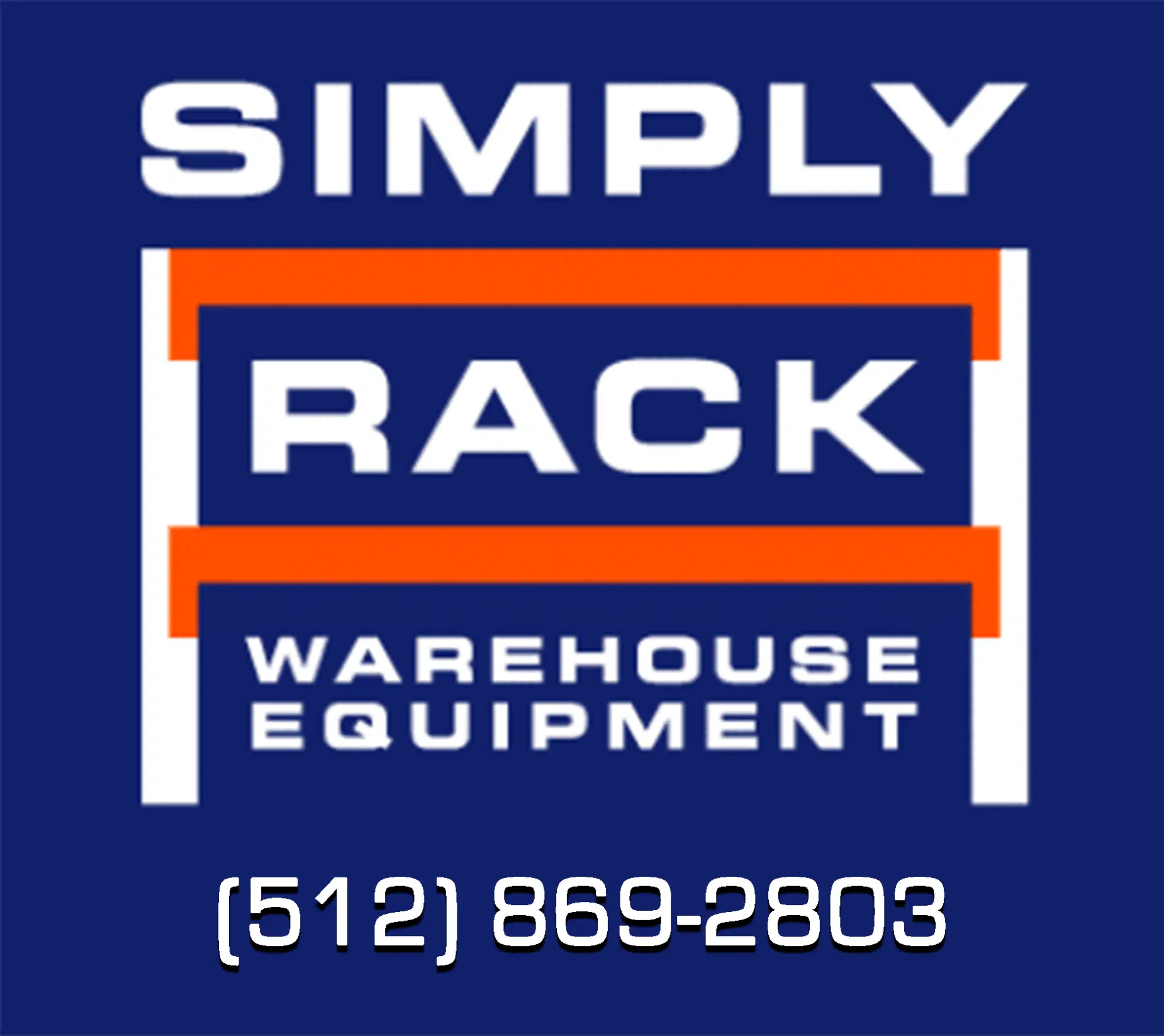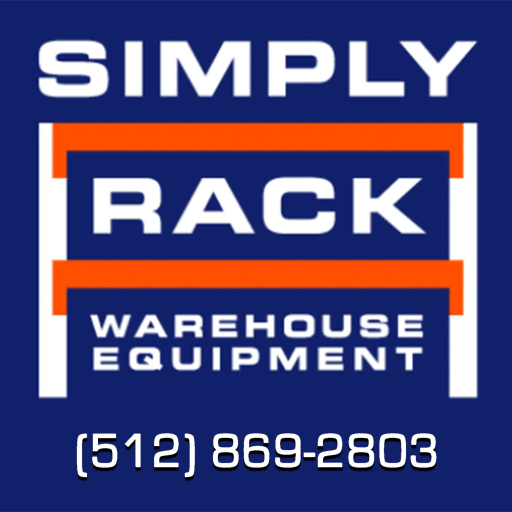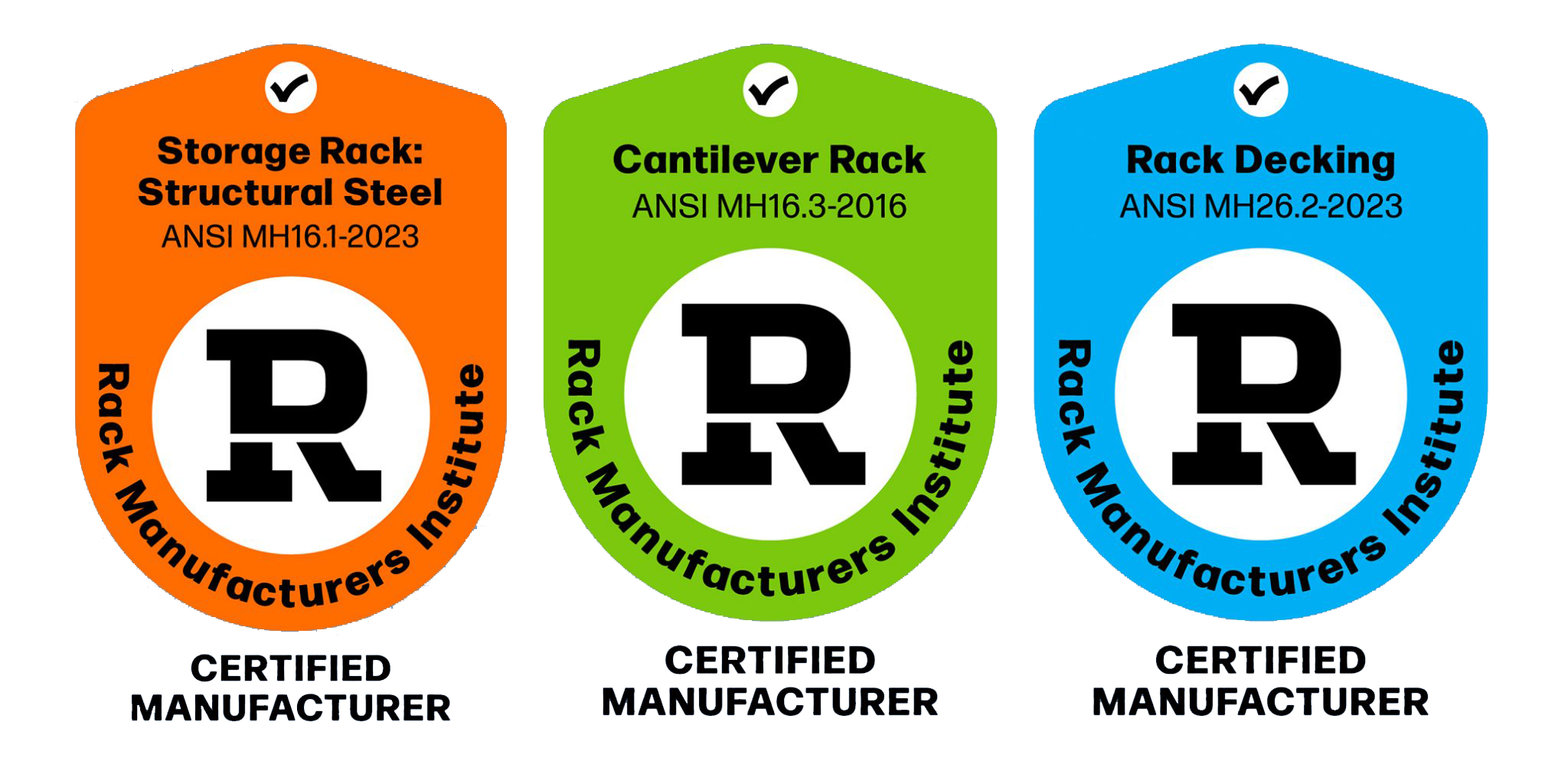The Complete Pallet Rack Guide
Pallet racks come in a wide variety of sizes and styles to complement any warehouse or distribution center, from customizable teardrop racks to efficient pushback racking. It can be difficult to determine which type of rack will maximize your warehouse’s efficiency, which is why we at Simply Rack have compiled a complete guide to all types of new and used pallet racking.
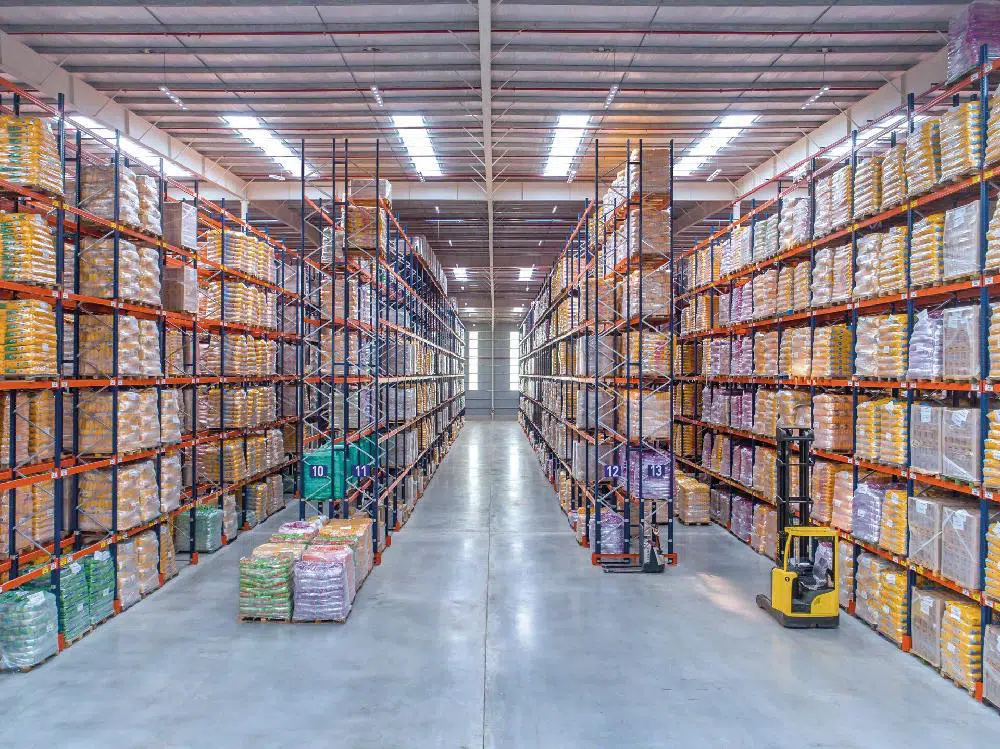
What Is A Pallet Rack?
Pallet racking is a warehouse storage system designed to hold palletized items on horizontal shelves on multiple levels. Pallet racks are notably more efficient than other forms of warehouse storage because they utilize more vertical space, and forklifts load and unload the materials to save time.
There are many kinds of pallet racking for various warehouse operations and industry needs, but the basic components of pallet racks included the upright frames, also known as pallet rack uprights, and the shelf beams.
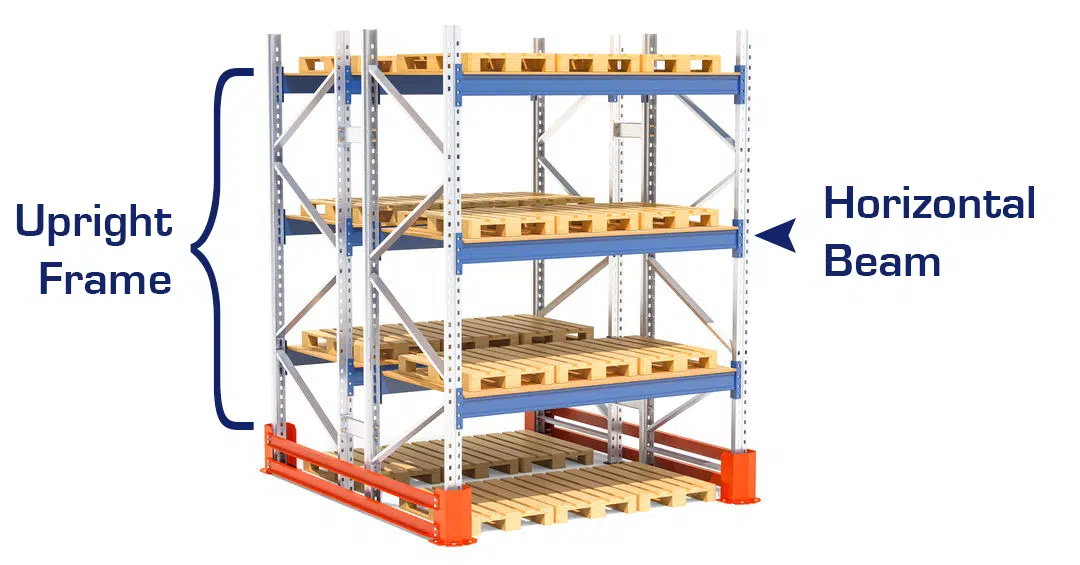
Pallet Rack Components
Upright Frames:
The upright frame is made up of two metal columns held together by bracing that runs diagonally or across the two posts. The columns have holes punched into the metal, typically in a teardrop, keyhole, or T shape, for the horizontal beams to connect and lock in.
These upright frames are also available in a variety of heights, widths, and post sizes to accommodate different weights and dimensions of the stored items.
Horizontal Shelf Beams:
The pallet rack beams are made of heavy duty, weight-supporting rails that attach to the upright frames and create the actual pallet shelves. These horizontal beams support the pallets themselves, and are also available in different lengths and heights to support a variety of weight and capacity requirements.
Pallet rack beams also come in two main styles, step beams and box beams, which allow for additional support or wire decking.
Supporting Pallet Rack Components:
Because pallet racks often hold a lot of heavy materials, there are several safeguards in place to increase weight capacity and provide additional strength. While the components may vary based on the type of rack or overall weight capacity, the main forms of support come from the anchor bolts, which anchor the racks to the warehouse floor, wood deckers or stickers for more support to the pallets, and row spacers between back-to-back rows of pallet racks to add integrity to the pallet racking system.
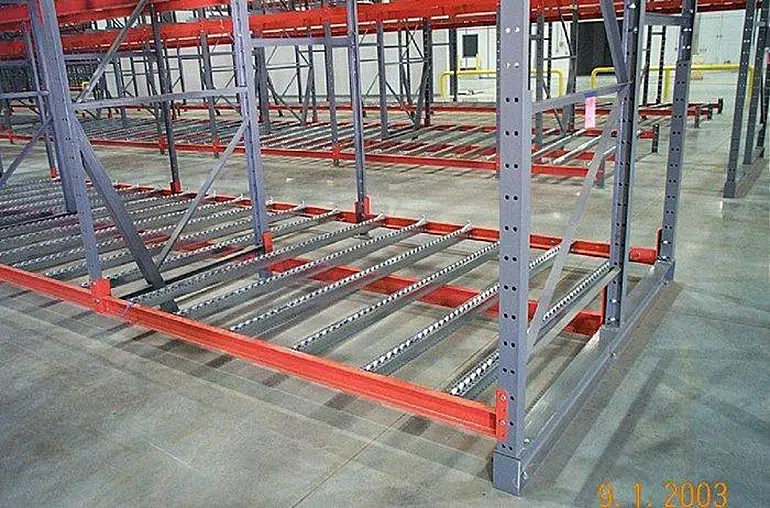
Wire Mesh Decking:
Wire decking creates a “floor” across the horizontal shelf beams, which helps support the stored items and prevents products from falling through the racks themselves.
Timber Decking:
Timber or wood decking fills a similar role to wire decking, but comes in two forms: slated close-boarded. Slatted wood decking forms rows of timber across the support beams, while close-boarded makes a wooden “floor” to the row of racking.
Base Plates:
Pallet racks also have base plates, located at the foot of each column, to anchor the rack in place and give the entire structure more stability.
Upright Column Post Protectors and Guards:
Also known as straddle protectors, these bolt-on accessories attach to either to the racks themselves or the warehouse floor to help shield the parts of the pallet rack from forklift and impact damage. They can also help increase the racks’ durability.
Types of Pallet Racking
There are many different types of pallet racking storage systems, and each has its own benefits suited to different types of storage and industries. Some offer higher density storage, while others allow for easier access to stored items or can accommodate heavier loads. It’s imperative to understand the basics of each type of rack to find the storage system that will be most efficient for your warehouse.
When selecting your pallet racking storage system, consider:
- Storage density
- Floor space
- Building height
- Inventory accessibility
- Inventory rotation
- Necessary weight capacity
- Overall cost
- Additional benefits
Selective Pallet Racking
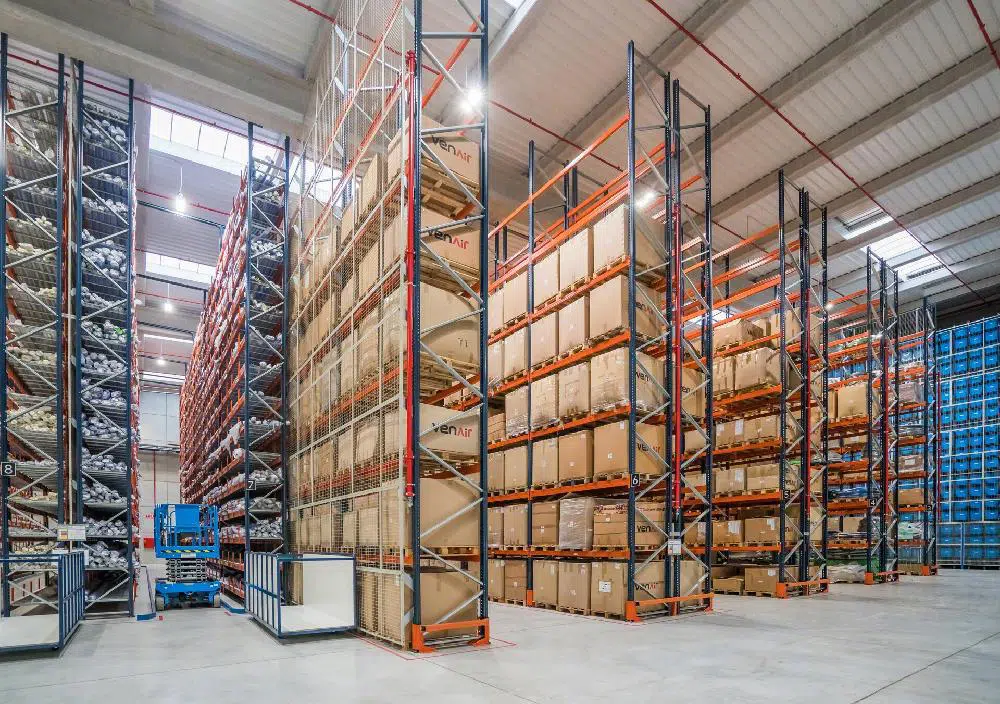
Selective pallet racks are the most popular and versatile kind of racking, and are likely what most consumers imagine when they hear “pallet racks.” Selective pallet racks are fairly basic, and are essentially metal shelves built to accommodate palletized items and easy access for forklifts.
Selective racking accessories include:
- End aisle protector
- Welded and bolted row spacers
- Post protector
- Welded and bolted wall ties
- Corner protector
- Welded and bolted post protector
- Double flanged pallet support
- Roll in pallet support
- Shelf panel
- Fork clearance bar
- Drum cradle
- Drum/coil bed
- Skid channel
Selective racking is designed to be a single pallet deep, but can also be placed back-to-back to create a double-deep system and increase overall storage. Your choice in configuration will rely on the variety of SKUs being stored, as a limited number of products will more likely require a double deep system that reduces the number of forklift access points but increases storage density.
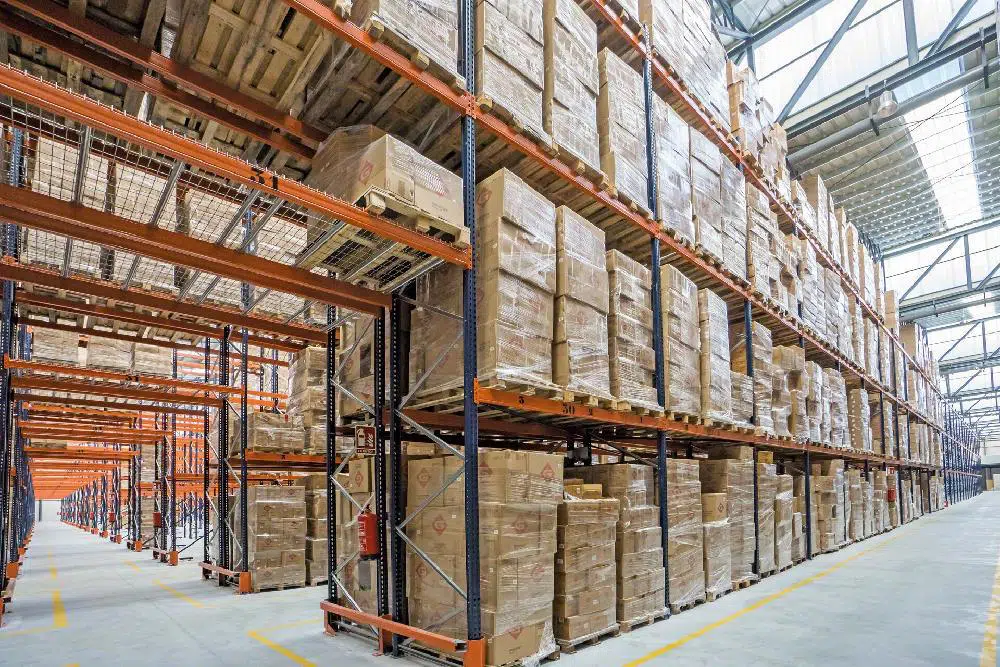
Double racking or back to back racking allows forklifts to more easily access a number of SKUs on a pallet, but reduces overall storage. These are ideal for FIFO (First In, First Out) storage, meaning that the last item stocked will be the first removed, which is perfect for retail, big box industries and those dealing with perishable items.
This type of pallet racking storage comes in two configurations, roll formed (or clip-in) or a structural bolt-together.
Roll formed pallet racks are typically manufactured as teardrop pallet racks, named after the teardrop-shaped holes that support the racks’ horizontal beams. The weight of the pallet, plus additional clips, help secure the load into the smaller area of the teardrop for extra support. Teardrop racks are typically easily compatible with each other, meaning that you can purchase used teardrop pallet racks without worrying about whether they’ll fit with your existing racks.

The clips of these roll formed racks can be easily removed, and the beams can slide easily up and out of the holes for easy height adjustments. This makes teardrop racks especially convenient for warehouses storing items of varying heights or sizes, or facilities that need easy customization.
Structural pallet racking is very similar to the roll formed racks, except that the horizontal beams are attached to the upright frames with bolts instead of clips. While these bolts are more difficult to reconfigure than the clips, they do provide a much higher load capacity. Structural beams can support 70% more weight over traditional roll-formed beams. They can still be dismantled and reused, but they often require specific tools to remove the bolts.
Structural beams can be adapted to work with roll formed beams, meaning that you can utilize both within the same facility depending for an economic alternative.
Advantages:
- Easy access to pallets
- FIFO inventory management
- Standard forklift access
- Ideal for low volume or high differentiation product lines
- Affordable
- Flexible weight capacity
- System customization
Pushback Rack
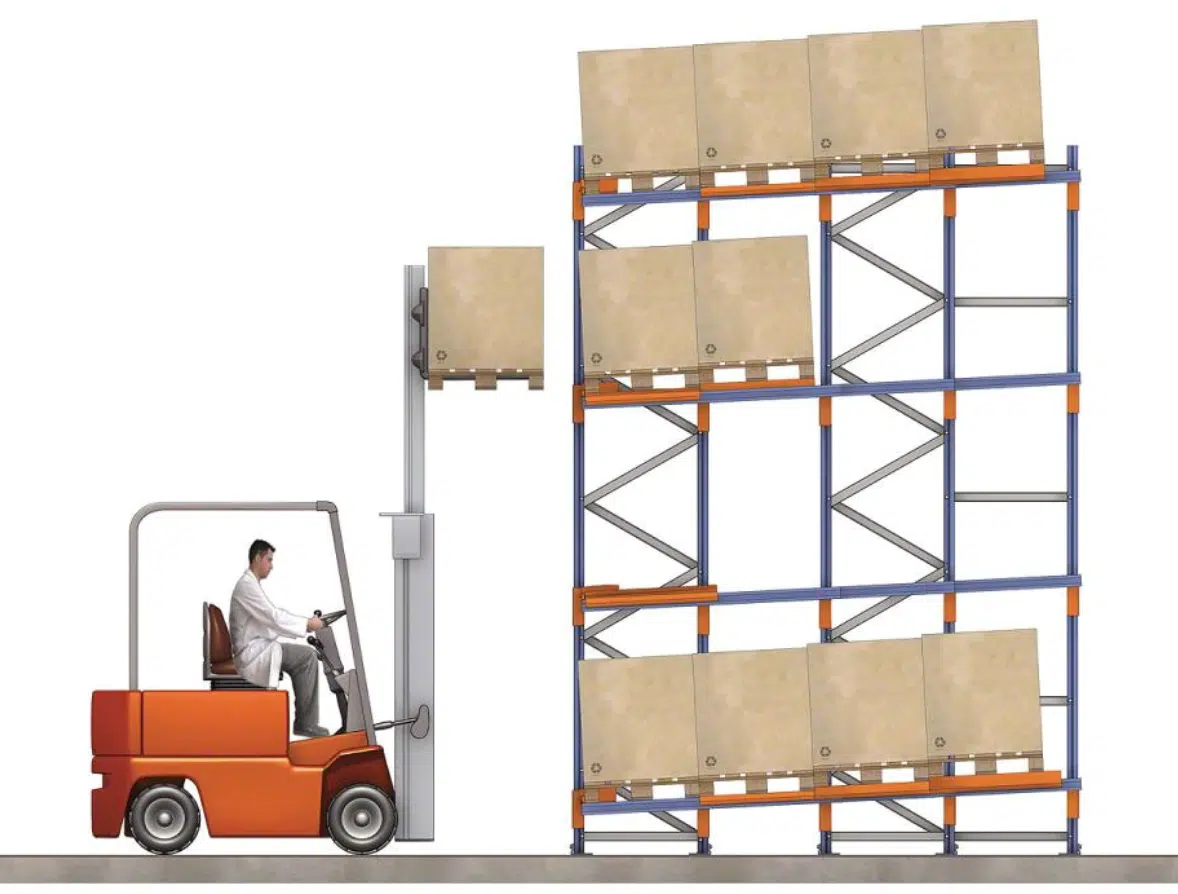
Pushback racks are named after the way pallets can be pushed along lanes on the rack itself, rather than resting on horizontal beams like with a selective rack. When a new pallet is added to the row, the pallets behind it are pushed back to create a LIFO (last in, first out) storage system. This storage system works similarly to some shelving in grocery stores, where, when the front item is removed, the others are pushed forward to take its place. When the front pallet is removed, the back pallets are pushed forward for easy access.
Pushback pallet rack solutions allow for pallets to be stored on both sides of the aisle, and it’s compactness creates a very high storage density. All pallets can be frontloaded, typically 2 to 6 pallets deep, and provides product accessibility and selectivity.
These pallet racks are sturdy and compact, and can operate for years with little to no maintenance.
Additionally, due to the debris-free design, pushback pallet racks are ideal for food applications.
Advantages:
- Maximum storage density.
- LIFO inventory management
- Sturdy construction.
- All pallets can be frontloaded.
- Little to no maintenance.
- Perfect for food applications and storage.
Pallet Flow Racking SYSTEMS
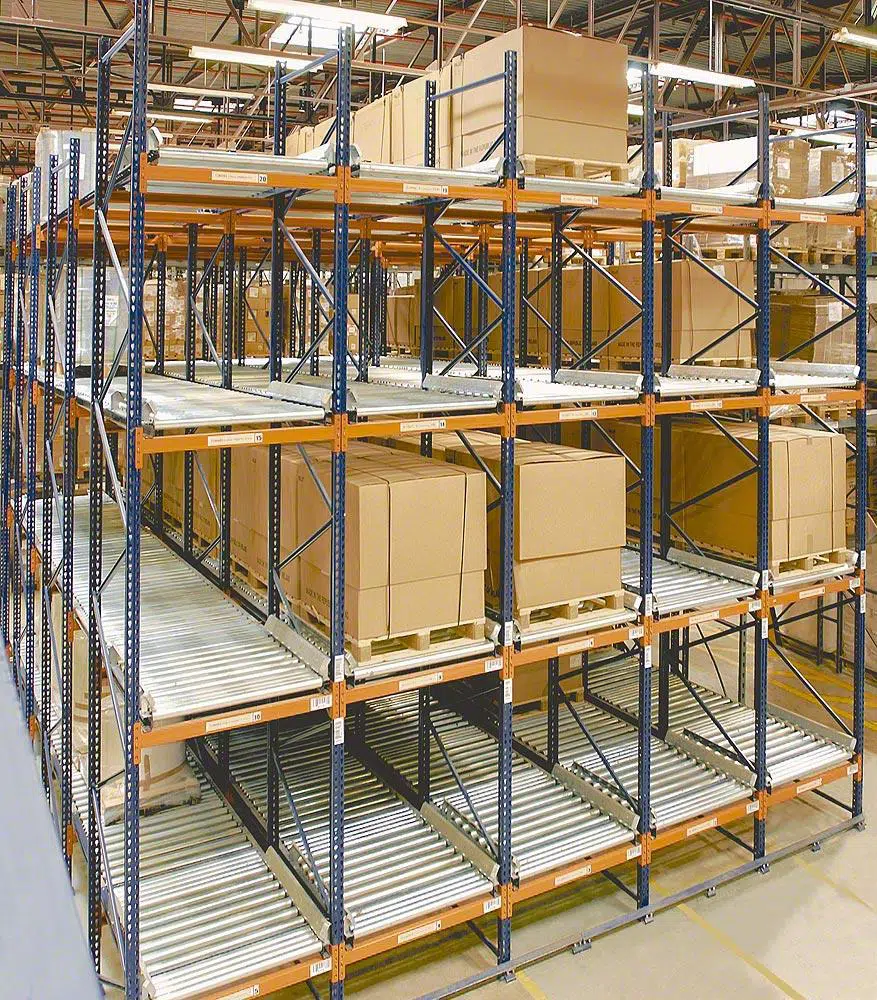
Also known as gravity flow racks, pallet flow racks utilize the force of gravity on slightly sloped lanes. Unlike a pushback system, pallets are loaded from the back of the flow rack, onto the highest end of the rack, and easily roll to the front for easy removal. When one pallet is taken off the rack, the next glides forward to take its place. This system allows for first in, first out storage with a higher storage density than traditional pallet racking.
Pallet flow racks rely heavily on customization to fully suit each individual facility. The actual roller tracks are available in single eight wheel or staggered wheel designs, and can be retrofitted into most types of static pallet racks.
These dynamic gravity flow racks are ideal for frozen-storage warehouses, food distribution, high volume of consumer goods, and warehouses where pallets need to be removed and replaced quickly.
Advantages:
- Ideal for material with expiration dates
- FIFO inventory management
- High density storage with an almost solid volume of usable space
- Saves manpower, utilities, and space
- Ideal for freezer facilities and food distribution
- Able to retrofit into existing facilities
Drive in Pallet Rack
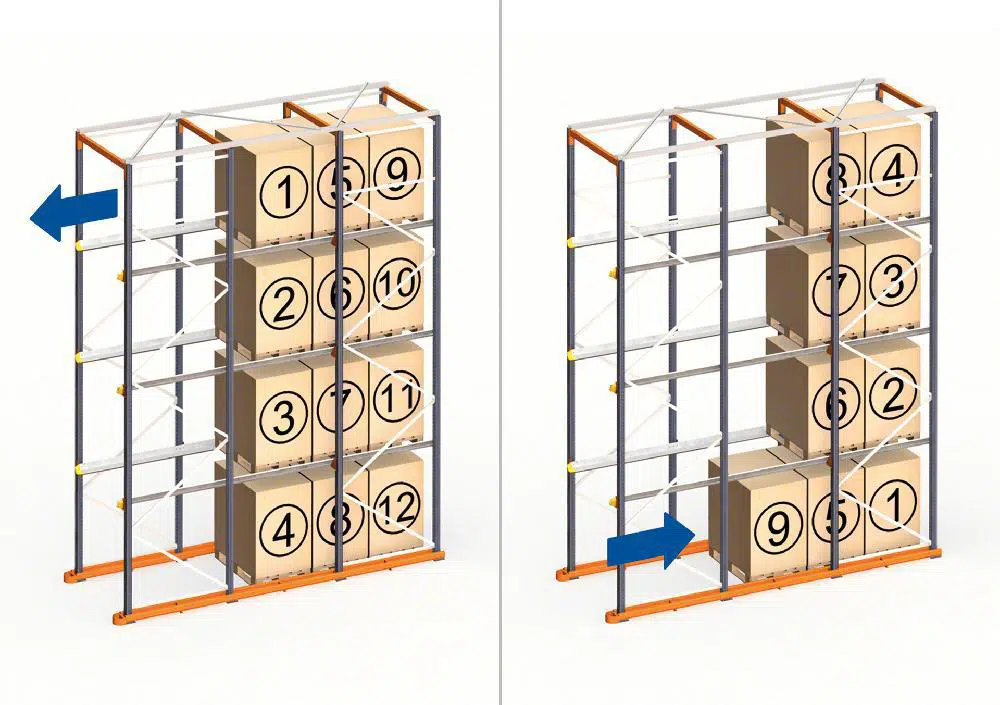
Both drive in and drive through rack systems allow more efficient use of available space than traditional multi-aisle selective racks systems, as they provide significantly more storage density. These high density storage racks work by utilizing standard pallet rack rail beams to store the pallet loads in a very dense configuration.
The key difference between drive in/through racks and selective pallet racks is that the forklift truck operates inside the rack itself rather than in specified lanes between the rows. Because the forklifts enter into the individual bays of the rack, the bays themselves can be as long or as short as needed without empty space between each row.
While drive-in and drive-through pallet racking systems are very similar, but have a few key differences.
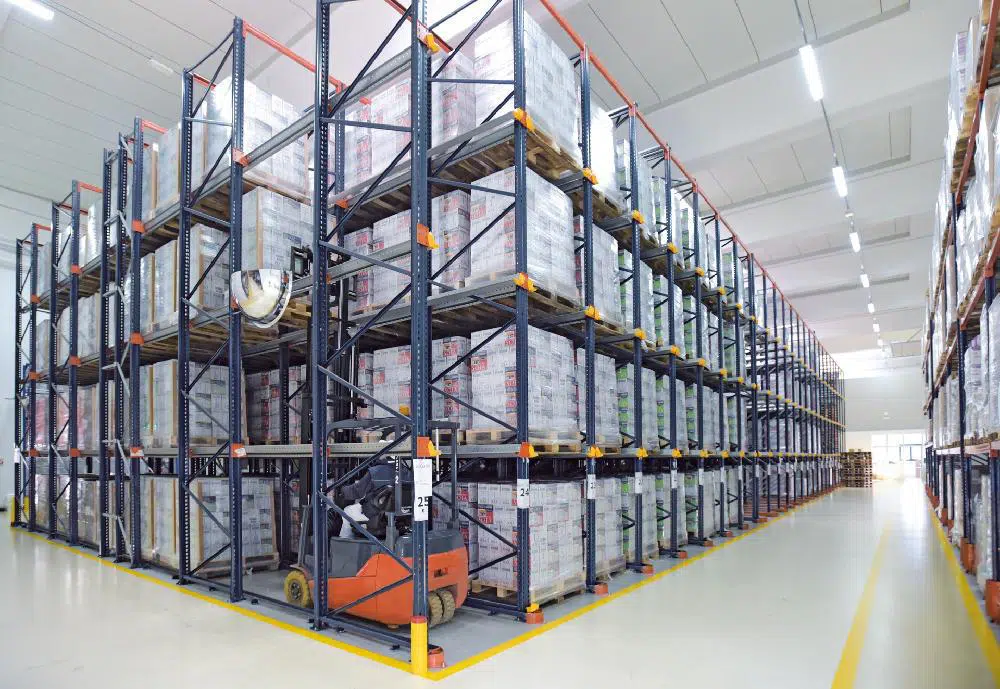
Drive-in racking is a first in, last out (FILO) system where pallets are loaded and retrieved from the same side. Forklifts can drive directly into the rack bays, storing the pallets from the back forward. This allows for a higher storage density, and these systems can house more pallets than selective pallet racking.
Drive-through racking, meanwhile, works in a similar way except that the pallets are loaded form one end and retrieved from the other, creating a first in, first out (FIFO) system.
Advantages:
- Last in, first out, or first in, first out configurations
- Reduces space required
- Customizable based on facility size and storage needs
- Minimizes aisles required for pallet access
- Can be designed based on product stored and forklift access
- Ideal for warehouses with high volume and low SKU numbers
Choosing Your New Or Used Pallet Racks
If you’re interested in learning more about pallet racks, are unsure which racking system would best suit your warehouse, or want to request an estimate, contact Simply Rack today. We have an unmatched inventory or commercial racking systems, both new and used, as well as superior customer service.
Whether you’re looking for a fully customized warehouse storage system, a few new pallet racks, or anything in between, Simply Rack is here to ensure your facility functions at max capacity. Get in touch to speak with one of our warehouse storage experts!
